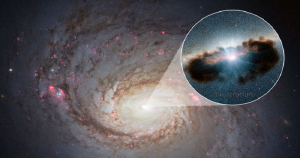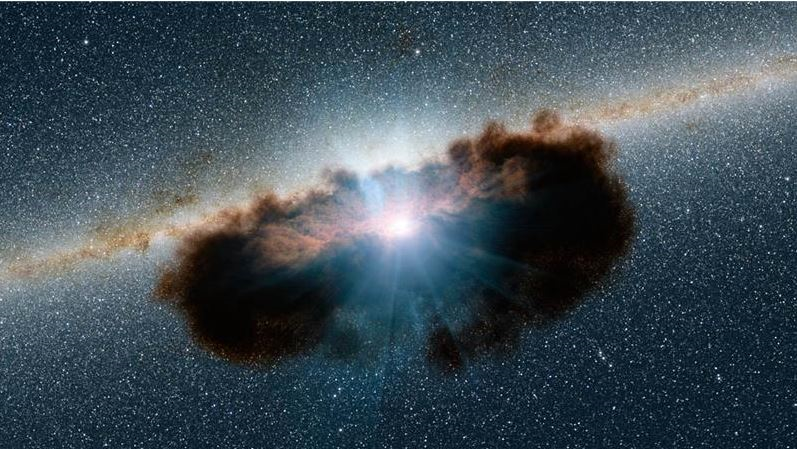
NuSTAR Finds Cosmic Clumpy Doughnut Around Black Hole Clumpy, Not Smooth
Rotating material around massive black holes is not a simple, rounded doughnut as originally thought. The thick donut-shaped disks of gas and dust that surround most massive black holes in the universe are ‘clumpy’ rather than smooth, says a new study co-authored by an Indian-origin researcher.
Doughnuts around supermassive black holes were first proposed in the mid-1980s to explain why some black holes are hidden behind gas and dust while others are not. They are more like defective, lumpy doughnuts that a doughnut shop might throw away.

Until recently, telescopes were not able to penetrate some of these thick donut-shaped disks of gas and dust, also known as tori, which feed and nourish the growing black holes tucked inside.
“Originally, we thought that some black holes were hidden behind walls or screens of material that could not be seen through,” said Andrea Marinucci of the Roma Tre University in Italy, lead author of a new Monthly Notices of the Royal Astronomical Society study describing results from NASA’s Nuclear Spectroscopic Telescope Array, or NuSTAR, and the European Space Agency’s XMM-Newton space observatory.
With its X-ray vision, NuSTAR recently peered inside one of the densest tori known around a supermassive black hole. This black hole lies at the centre of a well-studied spiral galaxy called NGC 1068, located 47 million light-years away in the Cetus constellation.
The study is co-authored by Poshak Gandhi of the University of Southampton in Britain. “We don’t fully understand why some supermassive black holes are so heavily obscured or why the surrounding material is clumpy. This is a subject of hot research,” Gandhi said. “We’d like to figure out if the unevenness of the material is being generated from outside the donut, or within it.”
NGC 1068 is well known to astronomers as the first black hole to give birth to the unification idea. “But it is only with NuSTAR that we now have a direct glimpse of its black hole through such clouds, albeit fleeting, allowing a better test of the unification concept,” said Andrea Marinucci.
The new research is important for understanding the growth and evolution of massive black holes and their host galaxies.